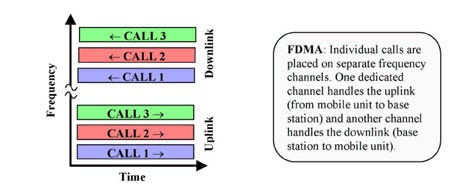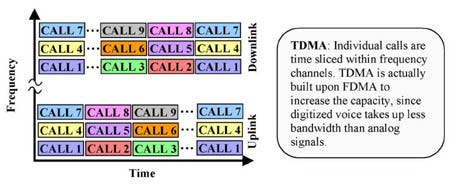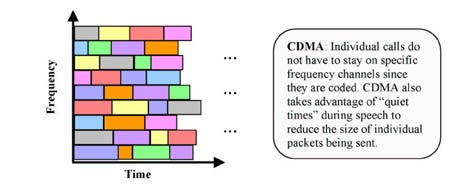The most common protocols governing the transmission of information over the air between base stations and mobile units
June 3, 2002

Some of the most common acronyms used in the discussion of wireless are those that describe the air interface method of a wireless network. The air interface technology specifies the method for transmitting information over the air between base stations and mobile units. Most air interface technologies are specified in standards that are agreed upon by multinational bodies comprising representatives in the wireless industry. Some air interface methods, however, remain proprietary with certain companies and details of their operation may or may not be publicly accessible.
The list of wireless air interface protocols that follows represents the most common standards in use around the world today. They are organized roughly in terms of the generations (1G, 2G, and 3G) of development and include various derivations or alternate terms used to describe them:
First Generation
The first wireless air interface standards were implemented in the late 1970s and early 1980s.
Second Generation
The change from analog to digital began in the early 1990s.
Third Generation
The next wave greatly boosts capacity, but there are technical difficulties that await resolution.
— Dave Mock is a writer and consultant covering wireless technologies and markets. Contact him at [email protected] or visit www.davemock.com for further information.
The first generation of wireless air interface standards, implemented in the late 1970s and early 1980s, were largely analog in nature. Basically, that means that the transmission of voice was simply done by modulating a carrier wave.
These systems operated with relatively high-powered signals (compared to current systems) and the range of transmission from mobile unit to base station could be several miles. Due to their simple analog nature, these systems were not very secure, making them prone to fraud and eavesdropping. They also had limited capacity, as a paired frequency channel was dedicated to a single call (see FDMA description below).
First-generation wireless systems also were limited to voice services. No provision was made in the air interface to send or receive any meaningful amounts of data, so services such as messaging and Caller ID are not provided for in these air interface protocols. Here are the more popular protocols, many of which are still in use:
NMT (Nordic Mobile Telephone): The first analog cellular system in use in Sweden and Norway, these systems are still common in many areas of Europe and Asia.
AMPS (Advanced Mobile Phone System): One of the earliest protocols, developed in the late 1970s by Bell Labs, it is often referred to simply as analog cellular. Variations of this protocol are well represented in North America and other areas of the world.
TACS (Total Access Communications Systems): Based upon AMPS, this analog system remains popular in Europe and Asia. Service on this system began in the U.K. in 1985, and many people there still prefer its reliability. Japan used a version of this system and called it JTAC.
The second-generation air interface technologies introduced digital techniques to enhance the efficiency of transmission and therefore increase network capacity. Many of these methods increased the capacity several times over analog systems by digitizing the voice signal before it is sent over the air. Voice packets from individual conversations could then be packed more tightly into channels to boost system capacity. They first began being deployed in the early 1990s, often times alongside analog systems still in operation.
To increase capacity, many of these air interface protocols employ the concept of multiple access (or multiplexing). Individual calls can be multiplexed in time (time division), in frequency (frequency division), or by codes (code division) to “stack” multiple callers in a frequency band that, using analog technology, could handle far fewer callers. Here’s a brief description of each technology:
FDMA (Frequency Division Multiple Access): A spectrum band is divided up into paired frequency channels, one dedicated to each caller. Total system capacity is determined simply by the number of channels. FDMA is predominantly used in early analog cellular systems.

TDMA (Time Division Multiple Access): An individual channel is divided up into time slots, then each slot is dedicated to a single caller. By digitizing speech, three or more individual conversations can be packed into a single paired channel. TDMA technology has been combined with FDMA in many of today’s wireless networks.

CDMA (Code Division Multiple Access): Digitized speech from each caller is broken up and assigned a code, then transmitted on any available channel in a spectrum band. The receiver can then use the codes to piece together individual conversations or ignore those that may not apply (in the case of the mobile unit). This technology boosts capacity, since codes can be selected so they don’t interfere with each other. This technology is also the basis for most wireless networks of the future.
 In addition to their digital techniques for transmitting voice, most of these air interface protocols also have provisions for sending limited amounts of data. This enables features such as paging, messaging, and Internet browsing. The digital nature of transmission also makes these protocols more secure and much harder to tap into illegally.
In addition to their digital techniques for transmitting voice, most of these air interface protocols also have provisions for sending limited amounts of data. This enables features such as paging, messaging, and Internet browsing. The digital nature of transmission also makes these protocols more secure and much harder to tap into illegally.
Below are several advanced 2G wireless standards that exist now or will be deployed soon. Keep in mind that these standards are each based on one of the three technologies above. Confusion arises because many of the standards are simply referred to by the technology they use, as in the case of TDMA and CDMA. It’s actually more accurate to refer to them as IS-136 and IS-95 respectively.
IS-136 (TDMA): A digital wireless technology that uses time division to split a channel into multiple time slots. Largely deployed in the Americas, IS-136 is one of the most popular TDMA protocols. Even though there are several protocols based upon TDMA, the term is most often used to refer to the IS-136 standard.
IS-95 (CDMA): A technology that uses digital spread spectrum techniques in communication between wireless devices, this was developed originally by the U.S. military. Qualcomm Inc. pioneered this air interface technology for commercial use in cellular and other wireless networks and holds a significant amount of intellectual property in the standards. Also called cdmaOne.
GSM (Global System for Mobile communication): A digital wireless protocol based on TDMA technology, GSM was developed largely through the efforts of European Union and Asian countries, it is noted for being highly secure and reliable. GSM also employs a removable smart card for the handheld unit, so subscriber information can be easily transferred. It is now by far the most popular protocol in the world.
iDEN (Integrated Digital Enhanced Network): A proprietary standard developed by Motorola Inc. that is also based upon TDMA, iDEN combines voice telephony, two-way radio, and short messaging features in one network. Nextel Communications Inc. is the largest carrier supporting this technology in the U.S.
CDPD (Cellular Digital Packet Data): This overlay protocol uses open voice channels to transmit low levels of data over wireless networks. AT&T Corp. and other carriers have set up CDPD networks in the main populated areas of the U.S. for data-centric services.
PDC (Personal Digital Communications): Established in 1991, this digital system is based on TDMA technology and operates in both the 800MHz and 1.5GHz bands. This protocol is employed predominantly in Japan.
PHS (Personal Handyphone System): A digital cordless phone system used primarily in Japan, with some use in other Asian countries as well, the range of the system is very small and is incorporated with the traditional home phone system to offer better economy.
GPRS (General Packet Radio System): A packet-based technology that can be overlaid on TDMA and GSM architectures for data services. When not used for voice conversations, individual time slots can be allocated for passing data back and forth.
EDGE (Enhanced Data Rates for Global Evolution): Similar to and based upon GPRS, EDGE is seen as the next step towards 3G for TDMA and GSM networks. It uses an enhanced modulation technique to further boost data transmission capabilities.
1xRTT (Single Carrier Radio Transmission Technology): An evolution of IS-95 CDMA protocol, some consider this the first phase of 3G for CDMA networks. The first iteration of the standard offers data rates of up to 144 kbit/s with backward compatibility to existing IS-95 systems. Also abbreviated to 1x.
i-Mode: This packet-based data service is available in Japan. It has a relatively slow data rate of 9.6 kbit/s but is very popular due to its ease of use and appealing services. While NTT DoCoMo brought this to the masses initially in Japan, the company has recently entered into partnerships to spread this service to Europe and the Americas.
HSCSD (High Speed Circuit Switched Data): A circuit-switched data transmission technology that can support speeds up to 38.4 kbit/s, this technology fits into TDMA and GSM systems, using voice channels to pass data.
Most of the third-generation wireless technologies employed in networks will maximize capacity through the use of code division techniques in the air interface. Significant variations exist among the different standards, though, in terms of synchronization, spectrum use, and coding techniques. There’s still a lot of work going on to solidify the various standards, and some still have technical issues that need to be worked out before widespread use is possible.
W-CDMA (Wideband CDMA): This protocol is designed to integrate well with existing GSM networks and will be the most popular 3G technology. It is designed to be used in 5MHz channels and is also coupled with recommendations for new frequency spectrum allocation.
cdma2000 (IS-2000): This protocol is the next-gen evolution from IS-95 (CDMA) networks. It includes intermediate steps termed 1xRTT and future derivations called 1xEV-DO (data only) and 1xEV-DV (data and voice) versions. It is more flexible with frequency spectrum allocation as it can operate in 1.25MHz channel allocations.
TD-SCDMA (Time Division Synchronous CDMA): A lesser known variant of 3G CDMA protocols, this protocol is also related to TC-CDMA or Time Code CDMA. TD-SCDMA is backward compatible with GSM networks and offers more flexibility with asymmetric services (where more information is passed in one direction). Slightly behind the other major 3G technologies in development, it has significant backing from several Chinese companies, as well as Siemens AG, Motorola Inc., and Nortel Networks Corp..
You May Also Like









